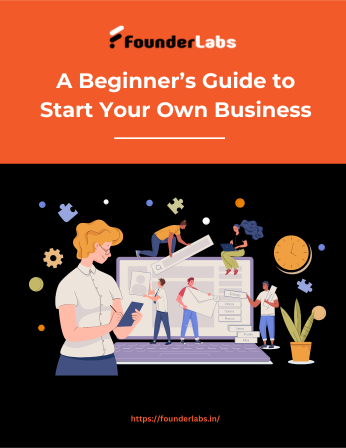Getting the first 100 customers is often the hardest and most defining milestone for any startup. It separates the idea-stage dreamers from those building something real — and in India’s highly competitive startup ecosystem, that first breakthrough takes both grit and smart execution.
We spoke to a range of Indian founders and growth experts who’ve made it past that stage, to decode how Indian startups go from zero to 100 customers — the tactics, tools, mindset, and mistakes that shape the journey.
Why the First 100 Customers Matter So Much
Unlike scaling from 10,000 to 100,000 users, the early grind isn’t about automation or ads. It’s about human effort, hustle, and iteration.
The first 100 users:
-
Validate your product-market fit
-
Teach you what people actually want (vs. what you think they want)
-
Help generate your first word-of-mouth
-
Lay the foundation for repeatability
“Your first 100 customers are not just numbers — they’re your co-creators,” says Kavita Bansal, founder of a B2B SaaS startup in Bengaluru. “They helped us build what actually mattered.”
1. Start with Your Immediate Network — But Be Smart About It
Nearly every founder begins with their personal and professional circle. But the key is to go beyond just asking for support — ask for feedback, referrals, and introductions.
“We made a list of 40 people who could benefit from our product and reached out with a short, clear pitch and a Calendly link,” says Ankit Shah, founder of a wellness tech startup in Mumbai.
“We didn’t say ‘please try this,’ we said, ‘I think this can help you solve X. Want to test it?’”
2. Offer Value Upfront — Even If It’s for Free
When trust is low, lead with value. That may mean:
-
Giving free trials
-
Doing manual onboarding
-
Hosting live demos or webinars
-
Offering “founding customer” perks
Example:
When Pooja Mehra launched her edtech app for vernacular learners, she gave free 1-month access to 50 early users, and personally spoke to each one.
“It took hours. But that’s where we discovered what truly mattered to them — and they brought their friends once they saw value.”
3. Use Conversational Channels: DMs Over Ads
Cold emails rarely convert in early stages — but conversational outreach works wonders.
Best early-stage acquisition tools:
-
LinkedIn DMs (with personalized intros)
-
Instagram Reels and Stories with direct CTAs
-
WhatsApp Business for lead follow-ups
-
Telegram or Discord communities
Don’t worry about scale — focus on one-on-one clarity and care.
4. Go Niche Before Going Broad
Many startups fail early because they try to appeal to “everyone.” Instead, go hyper-specific.
“We went all in on serving indie D2C brands in Delhi first — not India, not tier-1,” says Raghav Mittal, founder of a retail analytics tool.
“Once we got 20 obsessed users, we had a repeatable story to tell others like them.”
Niche means speed, clarity, and word-of-mouth.
5. Leverage the Founder’s Voice as the First Growth Engine
At this stage, founder-led content is powerful.
Talk openly about:
-
Why you’re building this
-
What you’re learning
-
Who you’re building it for
Use:
-
LinkedIn posts
-
Twitter/X threads
-
Podcast guest spots
-
Short Reels or YouTube Shorts
“We got our first 40 paid users just by sharing behind-the-scenes of our build journey on LinkedIn,” says Shruti Kumar, co-founder of a fintech startup in Pune.
People don’t buy early-stage products. They buy into people with conviction.
6. The Power of One-on-One Conversations
Yes, it’s exhausting — but nothing replaces real conversations.
Use:
-
Calendly to book quick intros
-
Google Meet to pitch or demo
-
Loom to record personalized walk-throughs
Key tip: Ask every early user:
“What would make you tell 3 friends about this?”
Common Mistakes Founders Make Before Hitting 100 Customers
-
Trying to scale too early
-
Ignoring feedback that hurts
-
Not charging anything (free forever = undervalued)
-
Chasing vanity metrics over conversions
-
Not knowing who your product is really for
From Zero to 100: Summary Checklist
-
Start with your existing network
-
Reach out manually via DMs, calls, and LinkedIn
-
Offer value (free trial, demo, special perks)
-
Pick a niche to dominate first
-
Share your founder story on social platforms
-
Speak to every early user like they matter (because they do)
Final Thought: The First 100 Are Never Random
Behind every successful Indian startup — whether it’s Razorpay, CRED, or Zepto — is a story of hard-won first users.
They didn’t just show up.
They were earned through hustle, heart, and relentless customer obsession.
The first 100 customers don’t just validate your startup — they shape its DNA.
Get them right, and you’re already halfway to product-market fit with FounderLabs .



